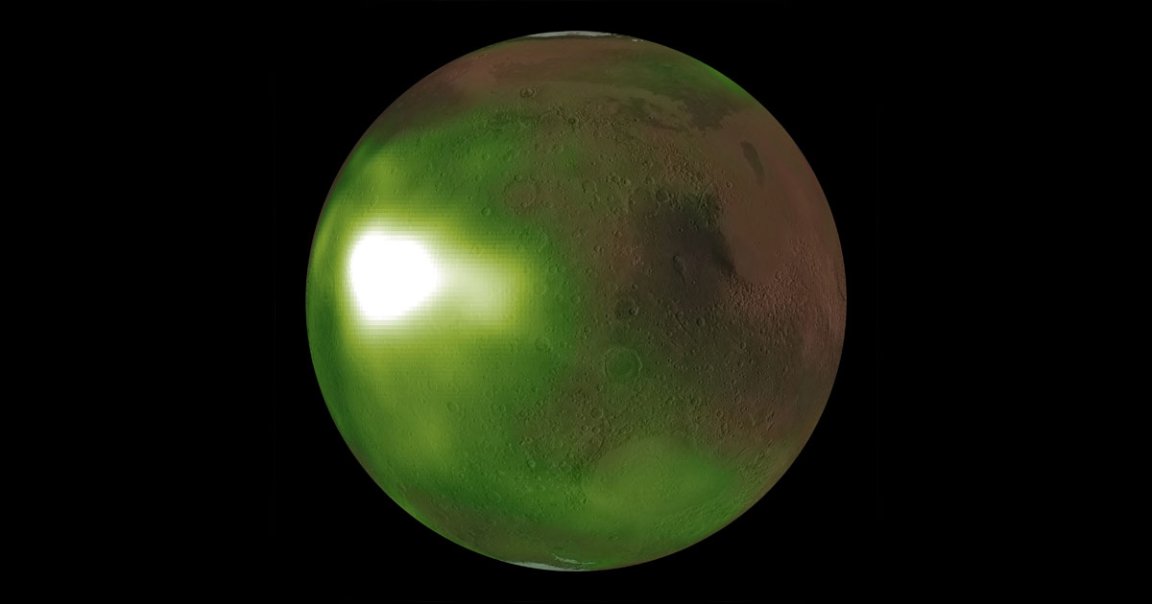
A new NASA simulation shows the ghostly ultraviolet flashes of Mars’ “nightglow” — greenish hues in the Martian night sky.
The stunning video comes courtesy of the Imaging Ultraviolet Spectrograph on board NASA’s MAVEN (Mars Atmosphere and Volatile Evolution) spacecraft, which launched back in 2013.

The observations were detailed in a new paper appearing the journal Space Physics this week.
To the MAVEN team’s surprise, they found that the Martian atmosphere pulsed exactly three times every night, but only during spring and fall on the Red Planet. The new analysis also showed unexpected waves and spirals over the planet’s poles during winter.
We’ve known about Mars’ “nightglow” phenomenon for a number of years now. Scientists have observed faint glows, likely the result of nitric oxide emissions.
Here’s how it works. On the day side of Mars, UV light from the Sun breaks down carbon dioxide and nitrogen molecules.
The resulting particles are then circulated by high-altitude winds from the day side to the night side, where they fall to lower altitudes. CO2 and nitrogen particles then recombine, creating energy, which is then released in the form of UV light.
“The ultraviolet glow comes mostly from an altitude of about 70 kilometers (approximately 40 miles), with the brightest spot about a thousand kilometers (approximately 600 miles) across, and is as bright in the ultraviolet as Earth’s northern lights,” Zac Milby, student researcher at the University of Colorado’s Laboratory for Atmospheric and Space Physics and co-author of the new study, said in a NASA statement.
“Unfortunately, the composition of Mars’ atmosphere means that these bright spots emit no light at visible wavelengths that would allow them to be seen by future Mars astronauts,” he added.
The team is hoping to examine the phenomenon from an entirely new perspective next by looking at just above the edge of the planet, where they’re hoping to get a more detailed look at vertical wind patterns and seasonal changes.
READ MORE: The eerie green ‘nightglow’ of Mars pulses in ultraviolet light in new NASA views [Space.com]
More on Mars: This Video of Mars’ Leaking Atmosphere Could Make Elon Musk Cry